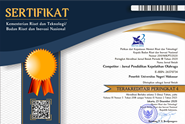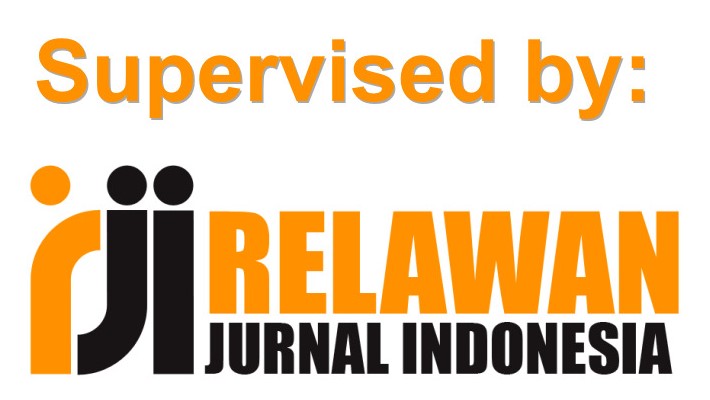Effects of Myofascial Release and Neuromuscular Taping (NMT) on Decreasing Pain in The Condition Myofascial Pain Syndrome Upper Trapezius Muscle
(1) Abdurrab University
(2) Abdurrab University
(3) Abdurrab University
(*) Corresponding Author
DOI: https://doi.org/10.26858/cjpko.v16i1.59550
Abstract
Keywords
Full Text:
PDFReferences
Barreto Silva, A., Malheiro, N., Oliveira, B., Pereira, D., Antunes, F., Borges, J., & Cunha, A. C. (2021). Efficacy of ultrasound-guided infiltration with levobupivacaine and triamcinolone for myofascial pain syndrome of the quadratus lumborum: a retrospective observational study. Brazilian Journal of Anesthesiology (English Edition), xx. https://doi.org/10.1016/j.bjane.2021.06.026
Blow, D. (2012). NeuroMuscular Taping: From Theory to Practice (English Ed). Edi-Ermes Medical Publisher.
Chang, W. H., Tu, L. W., Pei, Y. C., Chen, C. K., Wang, S. H., & Wong, A. M. (2021). Comparison of the effects between lasers applied to myofascial trigger points and to classical acupoints for patients with cervical myofascial pain syndrome. Biomedical Journal, 44(6), 739–747. https://doi.org/10.1016/j.bj.2020.05.020
Chen, Z., Wu, J., Wang, X., Wu, J., & Ren, Z. (2021). The effects of myofascial release technique for patients with low back pain: A systematic review and meta-analysis. Complementary Therapies in Medicine, 59, 102737. https://doi.org/10.1016/j.ctim.2021.102737
García-Espinoza, Ó. A., Salas-Fraire, Ó., Flores-Garza, P. P., Salas-Longoria, K., & Valadez-Lira, J. A. (2017). Analgesic effect of whole body cryotherapy in patients with trapezius myofascial pain syndrome: A longitudinal, non-blinded, experimental study. Medicina Universitaria, 19(76), 115–122. https://doi.org/10.1016/j.rmu.2017.07.004
Ghannadi, S., Shariat, A., Ansari, N. N., Tavakol, Z., Honarpishe, R., Dommerholt, J., Noormohammadpour, P., & Ingle, L. (2020). The Effect of Dry Needling on Lower Limb Dysfunction in Poststroke Survivors. Journal of Stroke and Cerebrovascular Diseases, 29(6), 104814. https://doi.org/10.1016/j.jstrokecerebrovasdis.2020.104814
Hargiani, F. X. (2019). Aplikasi Neuromuscular Taping Kasus Bell’s Palsy Pada Pengalaman Praktek Fisioterapi dI Klinik Kineta Sidoarjo. Jurnal Ilmiah Fisioterapi, 2(1), 10–14.
Miguel, C., & Cirera, A. (2021). Retrospective study of the clinical effect of incobotulinumtoxinA for the management of myofascial pain syndrome in refractory patients. Toxicon, 203, 117–120. https://doi.org/10.1016/j.toxicon.2021.09.022
Pasin, T., Dogruoz Karatekin, B., & Pasin, O. (2023). Pain, Anxiety, and Quality of Life of COVID-19 Survivors with Myofascial Pain Syndrome: A cross sectional study. Pain Management Nursing, xxxx, 10–15. https://doi.org/10.1016/j.pmn.2022.12.011
Ramon, S., Gleitz, M., Hernandez, L., & Romero, L. D. (2015). Update on the efficacy of extracorporeal shockwave treatment for myofascial pain syndrome and fibromyalgia. International Journal of Surgery, 24, 201–206. https://doi.org/10.1016/j.ijsu.2015.08.083
Sulistyaningsih, S., & Putri, A. R. H. (2020). Myofascial Release Menurunkan Nyeri dan Meningkatkan Fungsional Leher Myofascial Pain Syndrome Otot Upper Trapezius. Jurnal Keterapian Fisik, 5(2), 122–131. https://doi.org/10.37341/jkf.v5i2.231
Tantanatip, A., Patisumpitawong, W., & Lee, S. (2021). Comparison of the Effects of Physiologic Saline Interfascial and Lidocaine Trigger Point Injections in Treatment of Myofascial Pain Syndrome: A Double-Blind Randomized Controlled Trial. Archives of Rehabilitation Research and Clinical Translation, 3(2), 100119. https://doi.org/10.1016/j.arrct.2021.100119
Triyulianti, S. (2022). Pengaruh Neuromuscular Taping Dan Contract Relax Stretching Pada Kondisi Myofascial Pain Syndrome Otot Upper Trapezius Terhadap Penurunan Nyeri Leher. Jurnal Ilmiah Fisioterapi, 5(02), 34–38. https://doi.org/10.36341/jif.v5i02.2688
Article Metrics
Abstract view : 43 times | PDF view : 5 timesRefbacks
- There are currently no refbacks.
Copyright (c) 2024 Yose Rizal

This work is licensed under a Creative Commons Attribution 4.0 International License.
COMPETITOR IS LICENSED BY :
 COMPETITOR is licensed under a Creative Commons Attribution 4.0 International License.
COMPETITOR is licensed under a Creative Commons Attribution 4.0 International License.
COMPETITOR EDITORIAL LOCATION :
![]() Kampus FIK Banta Bantaeng, Jalan Wijaya Kusuma Nomor 14, Rappocini, Makassar, Postal Code 90222
Kampus FIK Banta Bantaeng, Jalan Wijaya Kusuma Nomor 14, Rappocini, Makassar, Postal Code 90222
COMPETITOR IS INDEXED BY















